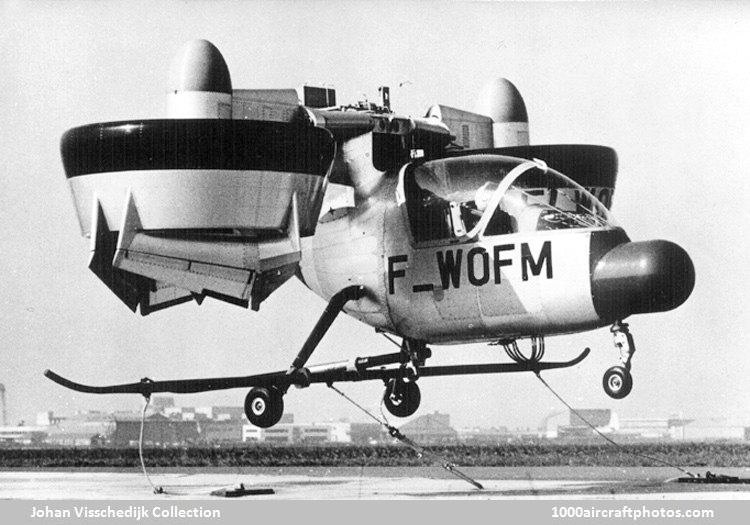The short-span fixed surfaces are carried by a raised boom which also housed the two side-by-side 317 shp Allison 250-C18 turboshaft engines, driving the two five-blade ducted pusher propellers through interconnected shafts of Hispano-Suiza design and manufacture, running through the stub-wings. For vertical take off and landing, the ducts tilted to a horizontal position, complete with the section of the wing to which they were attached. The enclosed cabin contained an ejection seat for the pilot and conventional controls. Control in yaw and roll was by differential thrust and tilt, with a "mixing" process during transition. Control in pitch was by collective tilting of the ducts. There was no provision for attitude control of the fuselage, which was given static stability in hovering flight by pendulum effect.
A full-scale mockup of the Nord 500 was shown in 1965. Two prototypes were built, the first was completed in April 1967 and was used as a mechanical and aerodynamic test bed for ground testing only. The second prototype made its initial tethered flight in July 1968. The first year of testing was carried out with the aircraft in tethered hovering flight and was followed by dynamic stability tests in wind tunnel and simulator. In its initial form, the Nord 500 was intended only for hovering and transition flight trials. Stage 2 development planned to utilize controlled and variable expansion of the flow from the ducts. A new version of the N 500 was designed, with hydraulically-operated controls and powered by 370 hp Allison 250-C20 turboshafts, but by 1971 all development had been suspended."
